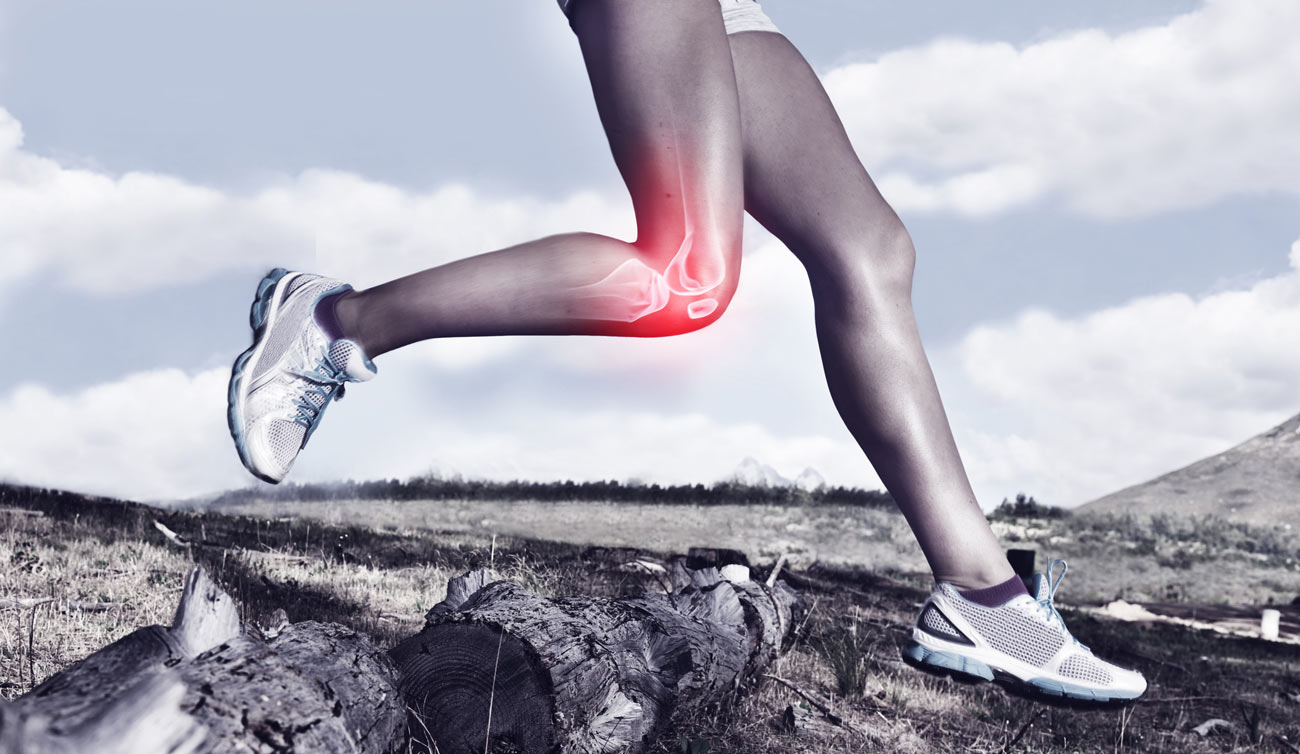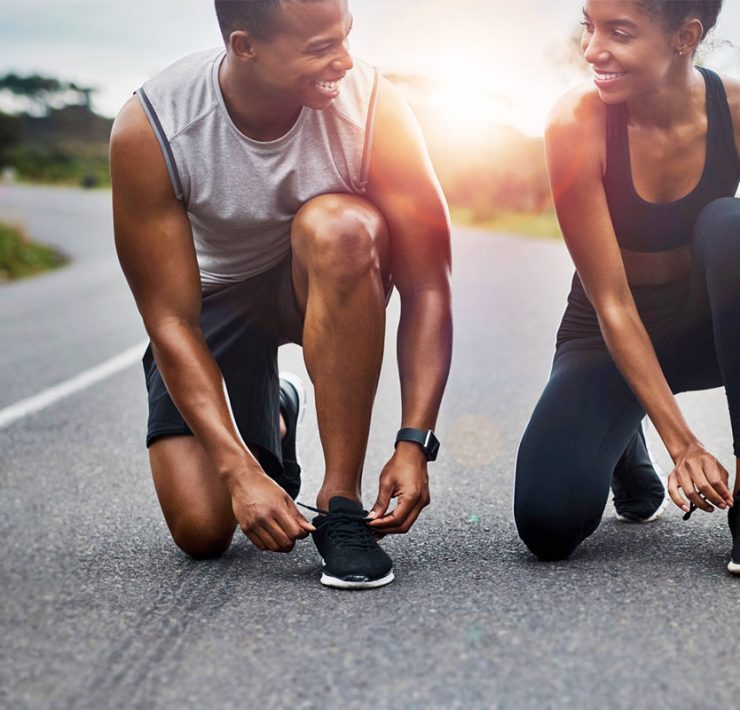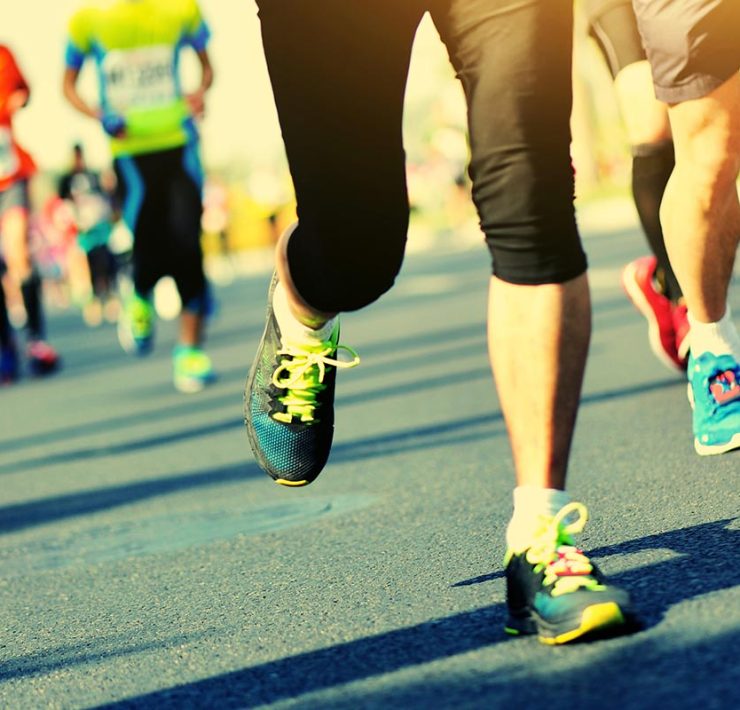Whether you were inspired by last weekend’s New York Marathon or you’re a longtime streaker, you’ve probably experienced at least some degree of what running can feel like for your knees. In a word: Ouch.
In more clinical terms, the cumulative impact and repetitive motion in the knees inherent in running can result in Patellofemoral Pain Syndrome, also known as “runner’s knee.” Characterized by pain behind and around the knee cap, runner’s knee is one of the most common injuries runners (and other athletes) experience.
Dr. John Gallagher, PT, DPT, CEAS, is an expert in orthopedics and sports rehabilitation with such athletic credos as Certified Running Gait Analyst, TPI Level 1 Certification with Titleist Performance Institute, and former Official Physical Therapist for the New York Saints professional lacrosse team. As Zeel’s National Director of Physical Therapy, he works with repetitive motion injuries and athletic strains every day, and runner’s knee is a complaint he addresses regularly.
As a generalized term for inflammation of the kneecap, Dr. Gallagher approaches runner’s knee with patients by examining not just the knee itself, but root causes and triggers of pain around it. “Oftentimes, the cause of the problem is not the knee joint itself but deficiencies up and down the kinetic chain—in the core, hips, and feet.”
“In its normal biomechanics, the knee is a hinge joint with the patella, or knee cap sliding up and down every time we bend and extend the knee,” Dr Gallagher explains. “If there are compressive forces due to tight muscles or shearing forces [misaligned forces pushing different parts of the body in different directions] due to weakness or instability, pain and inflammation can occur.”
“Oftentimes, the cause of the problem is not the knee joint itself but deficiencies up and down the kinetic chain—in the core, hips, and feet.”
Dr. John Gallagher, PT, DPT, CEAS
So is running bad for your knees? Dr. Gallagher says absolutely not, and that the dreaded runner’s knee can be avoided in otherwise healthy knees by simply doing it right—and listening to your body if it’s telling you otherwise. “Running with poor mechanics or going out too hard or too fast without proper recovery can be bad for your knees as well as other joints.”
So what should you do if your knees are beset by run-induced pain? Dr. Gallagher advocates for continuing this otherwise healthy endeavor, but with extreme mindfulness and care: Slow your speed, run shorter distances, and increase your rest between runs until the pain recedes and you can comfortably ramp back up. “I’m not a fan of total rest unless it’s absolutely necessary to recover from an injury. The worst thing I can do is tell a runner to stop running!”
You may also reduce the strain of repetitive motion via cross-training—introducing new movements to your exercise routine can foster strength and suppleness of the tissues that surround and support your knees, as well as the knees themselves.
“I’m not a fan of total rest unless it’s absolutely necessary to recover from an injury. The worst thing I can do is tell a runner to stop running!”
As Dr. Gallagher points out, Wolff’s law states that tissues will adapt based on the demands placed on it. If you’re starting up a running routine, ramp up gradually, and your joints, bones, and muscles will come along for the ride.
And if you’re an experienced runner, you surely know that proper rest and recovery time is essential to preventing injury and inflammation—and recovering from it.
Runner’s Knee Symptoms
- Dull pain around the front, sides, or behind the kneecap, typically with a gradual onset
- Increased knee crepitus—a cracking or popping sensation or sound when moving the knee
- Pain arises with activities that place tension on the knees, such as running, squatting, or climbing stairs
- Pain or stiffness in the knee after sitting for long periods of time
- Stiffness and swelling (sometimes referred to as “water on the knee”) when transitioning from from sitting to standing
Causes of Runner’s Knee
- Stress on knee tissues greater than what it has adapted to handle—e.g. running too fast or too hard sooner than your body is prepared for
- Tightness in neighboring muscles, such as the quadricep and IT band, causing compressive forces on the knee joint
- Running or exercising in improper or unsupportive footwear
- Excessive training, such as going out too hard, too fast, or too frequently with insufficient recovery practices
- Muscle imbalance, which can allow uneven pressure on the knees and surrounding tissue
- Weak hip and foot stabilizers, which can cause a valgus force, or inward bend, at the knee joint
- High BMI: Carrying excess weight can place extreme force on the knees.
Treatment for Runner’s Knee
- Rest and rehabilitation: For most people, proper down time—both to recover from a bout of runner’s knee and on an ongoing basis—will do the trick on its own.
- RICE: Rest, to protect the injured or sore area; Ice, to reduce pain and swelling; Compress (i.e. wrapping the injured area with an elastic bandage like an Ace wrap), to help decrease swelling; and Elevate, to let gravity move fluids away from the injured area and ease inflammatory pressure.
- Dial it back: Run at a slower pace, and for shorter distances, until you’ve recovered.
- Stretch: Stretching can’t be emphasized enough for runners! Calves, quads, hamstrings, and IT bands should all be stretched amply before and after a run, to reduce force on the knees caused by stiff, shortened muscles.
- Strengthen: It may seem like all cardio all the time, but strength training—particularly of the muscles around, above, and below the knee joint—is vital to a pain-free running practice. Strength training should also include the core, hip stabilizers, knees, and feet. musculature.
Exercises to Prevent Runner’s Knee
- Squats, to strengthen the quadriceps, hamstrings, and glutes (buttocks and hips)
- Romanian Deadlifts (RDL), to strengthen the hamstrings, glutes, lower, and middle back
- Mountain climbers, to build core strength with less pressure on the low back and knees
- Lateral band walks, to increase hip and knee stability, and strengthen the hip abductors
- Intrinsic foot exercises and toe toga, to foster strength and stability in your feet. You can blend your foot exercises into a broader stability training routine with a Mobo Board.
Note that you should always consult your physician or physical therapist regarding any pain or injury you’ve sustained. If your running-related pain is persistent or gets worse, Dr. Gallagher advises that you seek medical care from a practitioner who specializes in orthopedic or athletic-related injuries.

Reviewed by John Gallagher, PT, DPT, CEAS. Dr. Gallagher is a licensed physical therapist with over two decades of experience focusing on orthopedics, ergonomics, and sports rehabilitation. Meet our Editorial Review Board.







